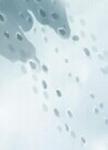版权所有:内蒙古大学图书馆 技术提供:维普资讯• 智图
内蒙古自治区呼和浩特市赛罕区大学西街235号 邮编: 010021

作者机构:Univ Chinese Acad Sci Sch Comp Sci & Technol Beijing 100190 Peoples R China Chinese Acad Sci Res Ctr Fictitious Econ & Data Sci Beijing 100190 Peoples R China Chinese Acad Sci Key Lab Big Data Min & Knowledge Management Beijing 100190 Peoples R China
出 版 物:《IEEE TRANSACTIONS ON CIRCUITS AND SYSTEMS FOR VIDEO TECHNOLOGY》 (IEEE视频技术用电路与系统汇刊)
年 卷 期:2021年第31卷第6期
页 面:2192-2205页
核心收录:
基 金:Science and Technology Service Network Program of Chinese Academy of Sciences (STS Program) [KFJ-STS-ZDTP-060] National Natural Science Foundation of China [71731009, 61472390, 71331005, 91546201]
主 题:Image color analysis Semantics Loss measurement Task analysis Machine learning Feature extraction Computer vision Natural image matting feature attention scale transfer perceptual loss
摘 要:Natural image matting is an important problem that widely applied in computer vision and graphics. Recent deep learning matting approaches have made an impressive process in both accuracy and efficiency. However, there are still two fundamental problems remain largely unsolved: 1) accurately separating an object from the image with similar foreground and background color or lots of details;2) exactly extracting an object with fine structures from complex background. In this paper, we propose an attention transfer network (ATNet) to overcome these challenges. Specifically, we firstly design a feature attention block to effectively distinguish the foreground object from the color-similar regions by activating foreground-related features as well as suppressing others. Then, we introduce a scale transfer block to magnify the feature maps without adding extra information. By integrating the above blocks into an attention transfer module, we effectively reduce the artificial content in results and decrease the computational complexity. Besides, we use a perceptual loss to measure the difference between the feature representations of the predictions and the ground-truths. It can further capture the high-frequency details of the image, and consequently, optimize the fine structures of the object. Extensive experiments on two publicly common datasets (i.e., Composition-1k matting dataset, and *** dataset) show that the proposed ATNet obtains significant improvements over the previous methods. The source code and compiled models have been made publicly available at https://***/ailsaim/ATNet.